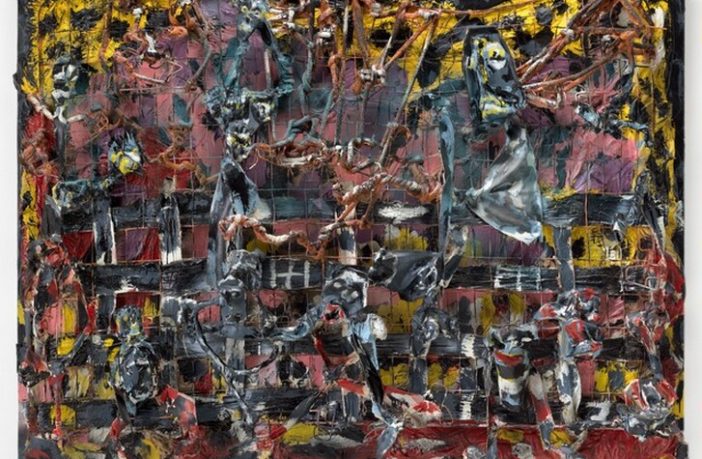Black creatives have always used their own environments and secondhand materials for both inspiration and materials for their art, tapping into whatever tools and resources are available to them to bring forth messages and experiences for the rest of the world to witness. From Thornton Dial to Mary T. Smith, these artists have created a fresh narrative through their sustainable-conscious pieces.
As the National Gallery of Art extends its Called to Create: Black Artists of the American South exhibition through 2023, EBONY celebrates these Black sustainable artists of past and present who have used their own and found possessions to express passionate stories and provocative perspectives to the world.
Thornton Dial Jr.
“A Man Can Be a Star,” Thornton Dial Jr., 1988. Image: National Gallery of Art, Washington, Patrons’ Permanent Fund and Gift of the Souls Grown Deep Foundation.
An Alabama artist who lived through social movements that shaped the U.S., Thornton Dial aimed to dismantle stereotypes through his art. Dial found inspiration in leaders such as Dr. Martin Luther King Jr., and his work has been celebrated for paying homage to overlooked Black artists in the past while posing new ideas. Dial’s various works helped to begin to bridge the gap between the “art world” and Black artists, who were treated as outcasts during his career. One of his greatest works is The Bridge, a 1997 sculpture at John Lewis Plaza in Atlanta. The work is an homage to the late Congressman John Lewis’ lifelong quest for civil and human rights and is made from scrap metal, tires, wood, plastic, various textiles and glass.
Lonnie Holley
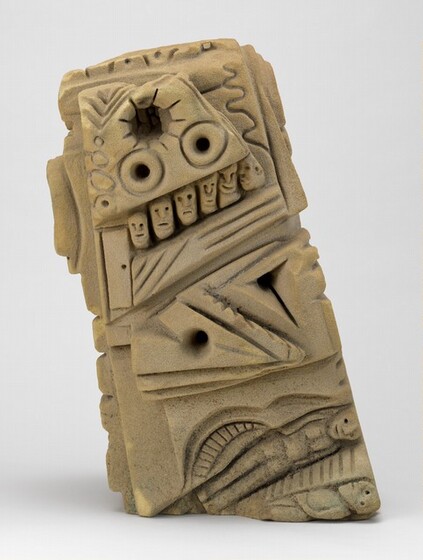 From the Beginning to the End to the Beginning, Lonnie Holley, 1985. Image: Patrons’ Permanent Fund and Gift of the Souls Grown Deep Foundation, courtesy National Gallery of Art.
From the Beginning to the End to the Beginning, Lonnie Holley, 1985. Image: Patrons’ Permanent Fund and Gift of the Souls Grown Deep Foundation, courtesy National Gallery of Art.
Also referred to as the “Sand Man,” Lonnie Holley’s art career started when he carved tombstones for two young family members in 1979. His talents led him to produce a variety of sandstone carvings and sculptures made out of salvaged materials; the Birmingham Museum of Art in Alabama publicly displayed his works almost immediately. Holley later went on to expand his horizons and put on large-scale sculptural and painting exhibits, as well as a music career that began in 2006.
Mary T. Smith
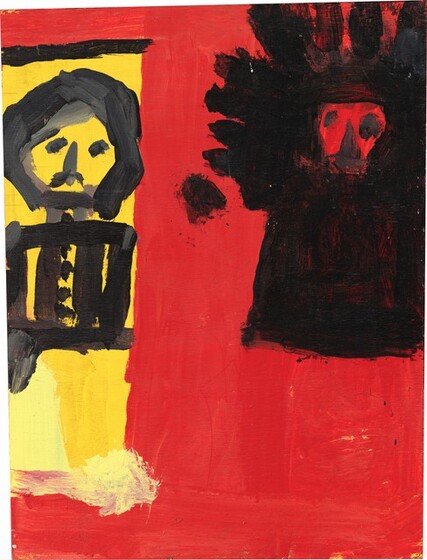 Untitled, Mary T. Smith, 1987. Image: Patrons’ Permanent Fund and Gift of the Souls Grown Deep Foundation, courtesy National Gallery of Art.
Untitled, Mary T. Smith, 1987. Image: Patrons’ Permanent Fund and Gift of the Souls Grown Deep Foundation, courtesy National Gallery of Art.
A painter born in the American South, Mary T. Smith began her career in the late 1970s with limited materials and paint colors. She often displayed her designs on easily available materials, such as plywood, corrugated tin and other recycled objects. Her compositions fascinated collectors at large as her paintings captured people close to her, along with the cryptic text she scattered within her works. Smith’s intensely personal and highly-coveted work enthralled the public and has found temporary homes in multiple museums.
Purvis Young
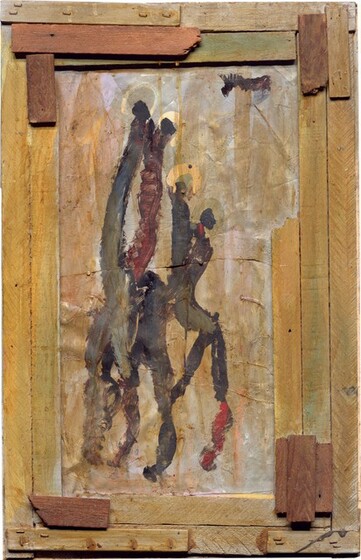 Saints, Purvis Young, late 1970s. Image: courtesy National Gallery of Art, Washington, Patrons’ Permanent Fund and Gift of the Souls Grown Deep Foundation.
Saints, Purvis Young, late 1970s. Image: courtesy National Gallery of Art, Washington, Patrons’ Permanent Fund and Gift of the Souls Grown Deep Foundation.
Shedding light on the experiences of African Americans in the southern United States, Florida-based artist Purvis Young became a local celebrity in Miami. Young began painting a mural in the early 1970s, gaining attention from tourists, collectors and museum owners. Cardboard, old plywood, broken furniture, scraps of fabric, discarded books, rusty nails and more served as his canvases. His works, which served as important social commentary from the Black community, have been featured in the National Museum of African American History and Culture. Young was posthumously inducted into the Florida Artists Hall of Fame in 2018.
Nick Cave
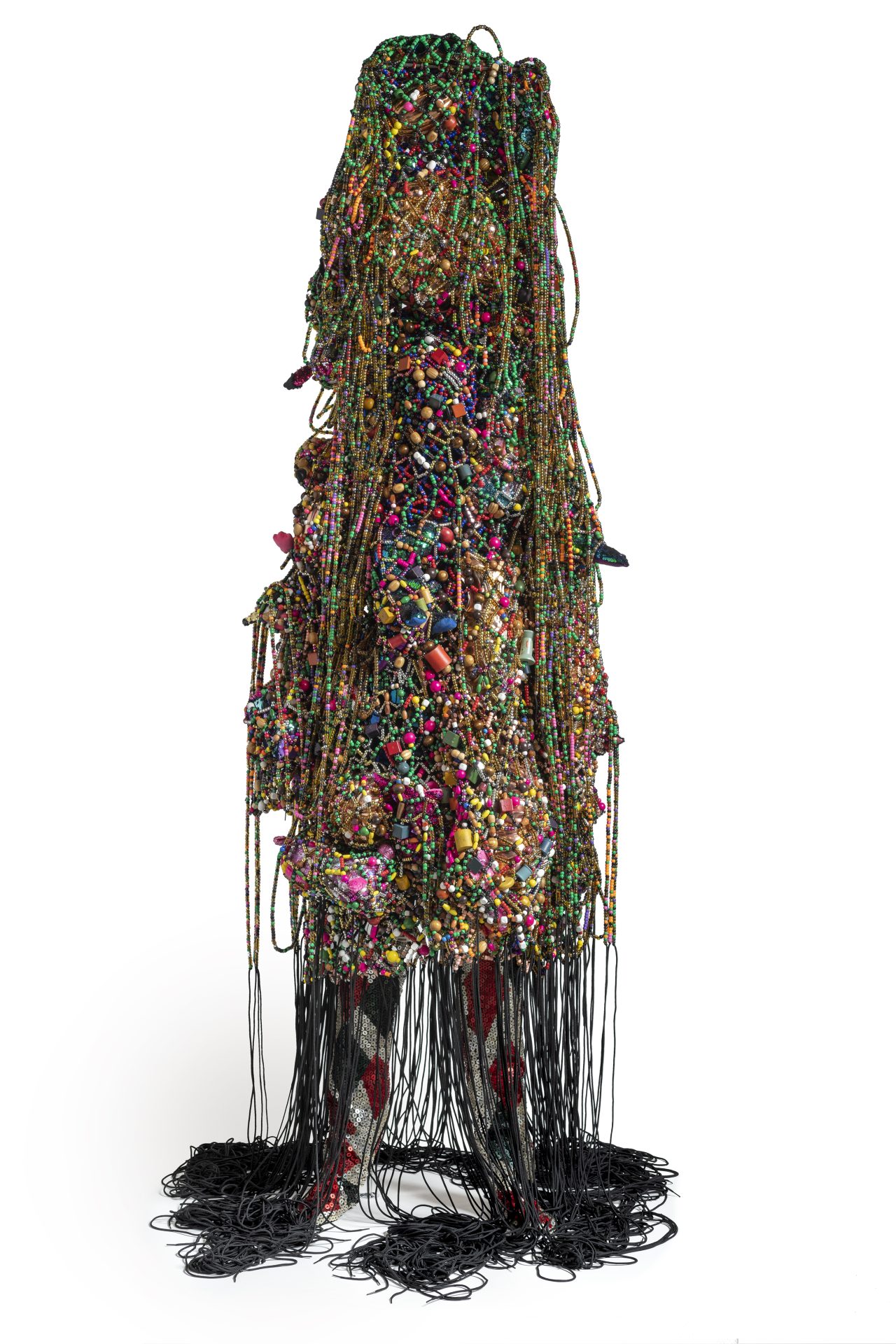 Soundsuit, Nick Cave (2019). Image: courtesy of Nick Cave and Jack Shainman Gallery, New York.
Soundsuit, Nick Cave (2019). Image: courtesy of Nick Cave and Jack Shainman Gallery, New York.
After learning to sew by mending old hand-me-down clothes as a child, performance artist Nick Cave used his skills to rise to prominence in the art community. In 1992, Cave created the first piece in his highly regarded Soundsuits collection, in which he uses cultural materials to create a wearable sculpture. To date, Cave has created over 500 Soundsuits and has continued to spread his creativity through his teaching career and through visual performances and installations in New York.
Betye Saar
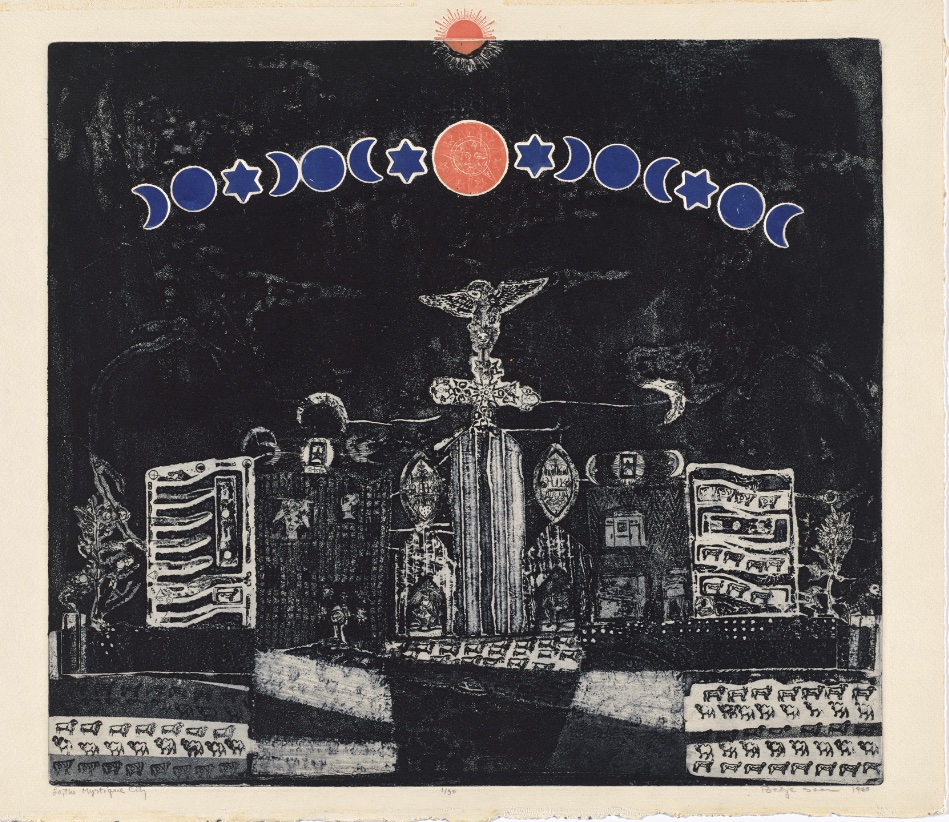 Lo, The Mystique City, Betye Saar, 1965. Image: The Museum of Modern Art, New York. The Candace King Weir Endowment for Women Artists.
Lo, The Mystique City, Betye Saar, 1965. Image: The Museum of Modern Art, New York. The Candace King Weir Endowment for Women Artists.
Political activist and visual artist Betye Saar has been active in the fight for social and racial justice since the 1970s. Influenced heavily by her great Aunt and assemblage artist Joseph Cornell, Saar used her collection of racist and stereotypical memorabilia and images to create collages focusing on Black women in society. Her role in the Black Art Movement of the 1970s, and poignant assemblages such as “The Liberation of Aunt Jemima” have cemented Saar’s importance and immeasurable contributions toward the Black community. Her work, Lo, The Mystique City, is an etching and aquatint with relief-printed found objects.
John Outterbridge
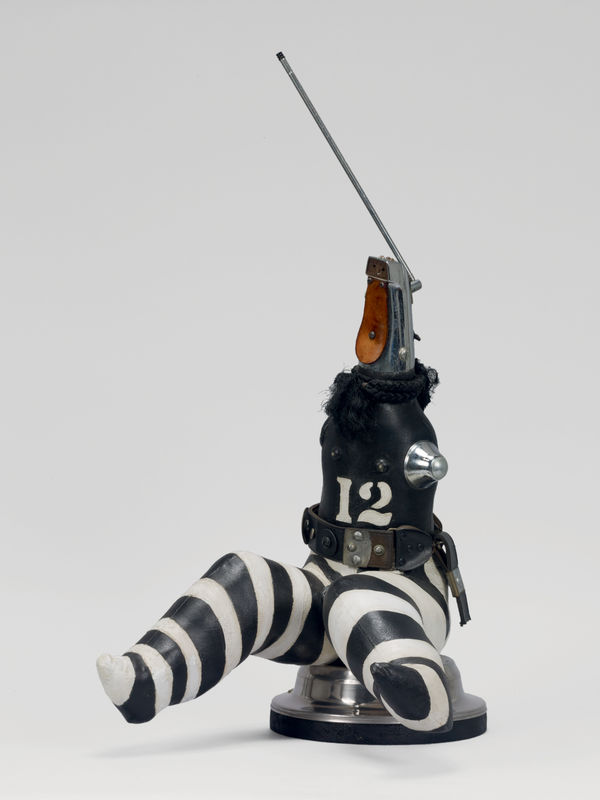 Captive Image #4, John Outterbridge, from the Ethnic Heritage Group, c. 1974–76. Image: Collection Lyn Kienholz, Los Angeles. Photo by Ed Glendinning, courtesy Hammer Museum, UCLA.
Captive Image #4, John Outterbridge, from the Ethnic Heritage Group, c. 1974–76. Image: Collection Lyn Kienholz, Los Angeles. Photo by Ed Glendinning, courtesy Hammer Museum, UCLA.
With a need to spotlight hostile racial tensions in the U.S., John Outterbridge gained national attention for his work in the midst of the nation’s violent war for civil rights. His Black-centered installations, such as sculptures made out of debris leftover from race riots and cut dreadlocks, carried deep political messages of struggle and justice. Outterbridge lived a life committed to art and community activism and received the lifetime achievement award from the California African American Museum before his death in 2020.
